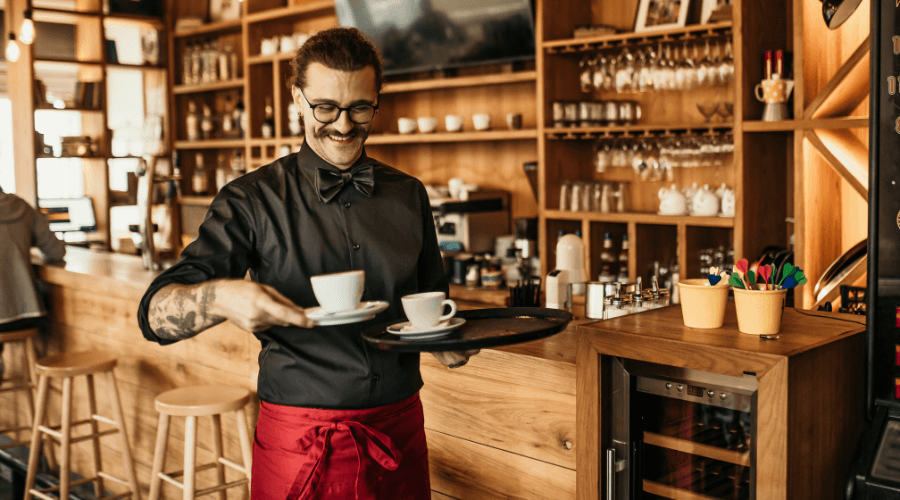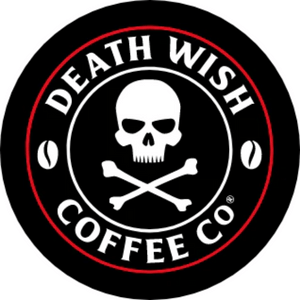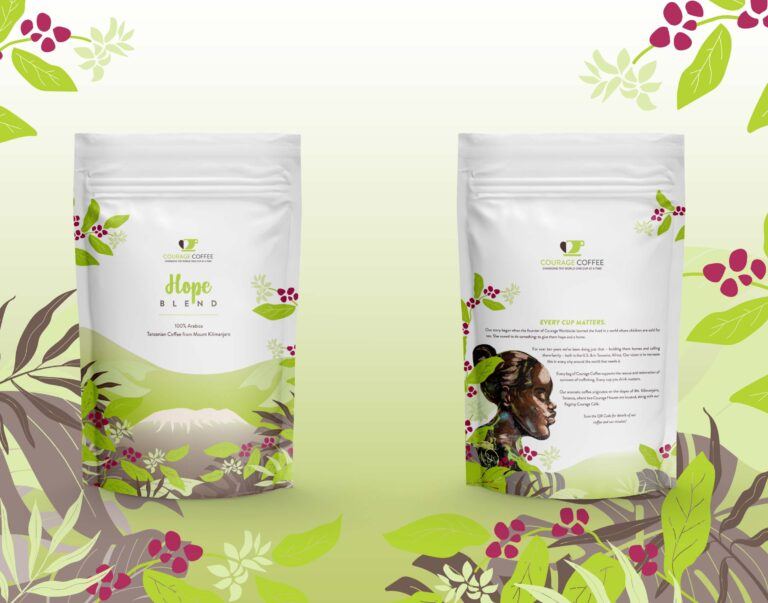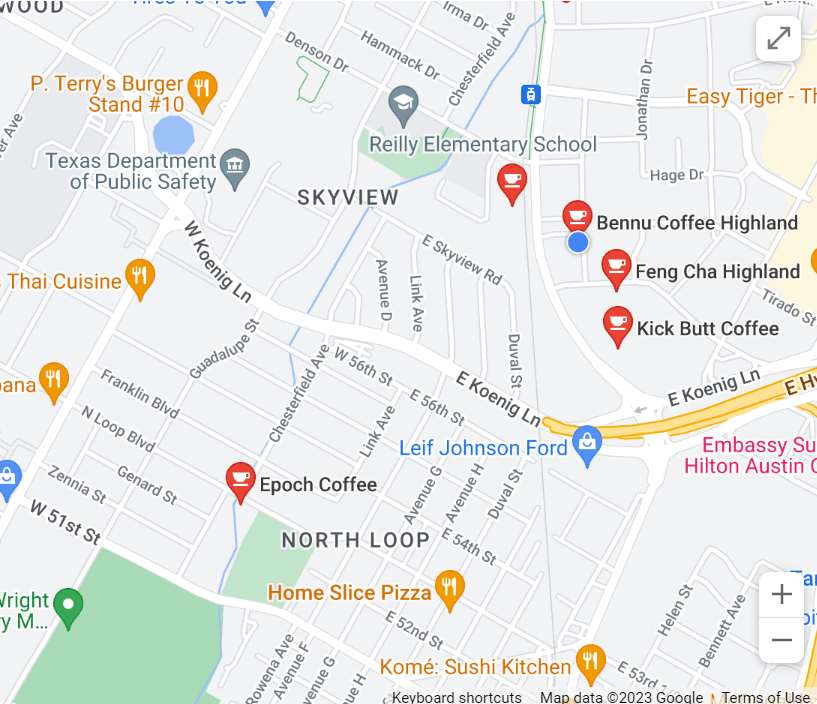A good cup of coffee is a beautiful thing. Some of us need an extra-large portion in quiet solitude first thing in the morning, while others need to keep up their caffeine addiction all day. But if there’s one universal truth, it’s that coffee is the universal love language of millions worldwide.
It takes some guile and effort, but we’ve seen some small businesses go from selling at the farmer’s market to seeing their products lined up on store shelves nationwide. We put together our favorite coffee marketing ideas and tips to boost your business significantly. (Pun intended.)
1. Express Your Coffee Brand’s Personality
New coffee companies are popping up everywhere. They’re like pizza places, with one on every corner. But there’s actually never enough coffee companies. As we say around here, “the more coffee, the better.” But how do you stand out from the crowd?
A coffee marketing trend we’ve seen over the last few years are the growth of quirky brands with unique, and sometimes off-the-wall, personalities. By doing this, startup brands appeal to niche audiences that are identified more by their own personality types than by demographics.
Take Death Wish Coffee. They’re the pioneers in combining the high caffeine content of robusta coffee with the bold taste of arabica coffee to give commuters a true jolt in the morning along with that high octane dark roast taste.
They express their unique personality with a skull and bones on their packaging, and really lean in on that motif. Just check out their Instagram feed and you’ll see what I mean.
Or check out Courage Worldwide coffee. Their personality is the opposite of Death Wish. The company’s mission is to designate profits to help rescue girls from human trafficking, and their packaging expresses that solemn yet sweet mission.
2. Build a Social Media Presence
Any coffee marketing strategy has to include social media. Who does your brand speak to? Are you fun and snarky, or are you refined and elegant? Your brand communicates your company’s character, so choose how your business will be remembered.
Once you know who your brand speaks to, stick with that idea and don’t stray because inconsistency is never a good thing when branding – you want customers to feel like they’re with a trusted friend every time they click the “buy again” button.
People love posting about their favorite brands, and people love to share things across social media. Share the posts of the people who love your brand. Promote a hashtag, and if someone makes a video, why not leave a comment?
Remind everyone to tag your business in their social media posts. If this is successful, you can always run promotions around the best captions or content they created, which is an easy move that boosts the company profile and expands reach to new potential buyers. That’s the root of how Instagram and TikTok blow brands up, so engagement is critical. Speaking to your core audience is vital here, once again.
3. Connect Through Content Marketing
Coffee people love coffee. Why not release helpful information like drink recipes, new brewing methods, or what’s happening in roasting? Turn your blog into an online coffee magazine, or turn your YouTube channel into “Java Junction TV”.
You could even start a coffee podcast! Interview coffee connoisseurs, mixologists specializing in combining our two favorite liquids, and writers, artists, musicians and artists about their favorite morning coffee ritual.
Whatever you do, the idea is to generate fresh ideas that capture the interest of your core audience – those who love to drink coffee.
Make sure you’re consistent in what you’re releasing because if you write three good blog posts and never put anything out again, that doesn’t establish the brand as the authority on coffee. Customers tend to choose brands with a trusted track record.
Also, don’t sleep on email marketing campaigns, either. Many still rely on email as a big part of their daily routines, and some may not have time to scroll on social media. This tactic encourages purchases and loyalty. Plus, some tools can give you the data on who opened the links, who looked around, and who converted. But remember, don’t flood their inbox every day. Think about the frequency of the emails you delete when a brand gets too overzealous.
Get mobile
4. Optimize Your Website and Google My Business
This topic could turn into a whole book, or at least a couple or ten blog posts. But let’s try to summarize it here as succinctly as possible: As part of your coffee shop marketing plan, you need to optimize your website and establish a presence on Google My Business.
Your website needs to be a place people want to go to. Period.
Turn your website into an app-like experience, so that with a few clicks on their mobile phones consumers can find a seamless shopping experience, recipes, brewing tips and more.
And please please please get them to sign up to your mailing list so you can establish a two-way communication with your customers. Offer a discount code for signing up, and send them regular updates such as recipes, coupons, special offers, seasonal flavors, and even invitations to special events like popup coffee shops when your brand is doing a 10-city tour, or a special launch event with live bands, celebrity chefs, and brewing classes (more on email campaigns below).
A special word on Google My Business: if you have a physical location, such as a coffee shop or a roasting facility, you absolutely need to be on Google My Business. If you didn’t know already, Google My Business is what Google Places used to be (Google has a habit of changing names on things).
Have you ever searched for your favorite taco place or…*ahem*…coffee house on Google Maps? The little red icons with coffee mugs, that look like pins on a map, are the establishments that have a solid Google My Business presence.
It’s free, it’s easy, and it puts you on the map so people can find you. It’s also a gathering place for reviews (whether good or bad, you need reviews. It’s better if they’re good though). Reviews show people that you’re a real place with real customers. And the better the reviews, the better the trust factor.
5. Partner With Other Brands
What goes with coffee? Pretty much anything. A solid partnership could be your local breakfast taco spot or a company making cool mugs with puppies.
Partnering up with companies doing things you can see your brand pairing well with is an easy win. The business relationship is mutually beneficial. Everyone should ideally share one another’s products on social media, blogs, or videos, cross-promoting one another.
This is especially critical if you’re a young coffee company still finding your way in the market. Having an established audience see your brand is a big win for future sales.
Tapping back into social media, there are brand ambassadors who make products feel personal because their fans trust their judgment – just ask the Kardashians. These people influence others, and if they’re promoting your coffee, others will believe it’s worth the gamble. But no matter who you work with or what other companies work with partners, you can see a long relationship, trust their values, and maybe learn a thing or two about your market.
6. Run Email Campaigns
These next two items should really be one and the same, but we thought we’d better parse them into two categories because there is a lot to be said about each.
The DTC trend is giving so much power to independent food and beverage companies because it gives them an opportunity to communicate directly with their fan base (make sure you turn your customers into raving fans that are loyal to your brand and will refer you to friends and family).
The key to forging an intimate, two-way communication with your end-users (even if you sell in stores) is through email. Yes, you heard that right, email.
I know there are a lot of naysayers out there who say that email is dead, and that you only need to engage your audience through TikTok.
Wrong.
Email is now stronger than ever. In fact, marketing guru Brian Clark said that email is where sales take place, and where brands and influencers forge more intimate relationships with their customers than through TikTok or Instagram.
But what kind of email campaigns should you run? The best email campaigns for food brands combine advice, entertainment and promotions in a 4 to 1 ratio. For every four pieces of non-salesy content, send one piece of promotional content, such as a special offer or a sales event.
Check out this sample email cadence for an example:
- Email 1, Day 0: Link to a video interview with Jerry Seinfeld about how he came up with the idea for his show “Comedians in Cars Getting Coffee.”
- Email 2, Day 3: Article about how the founder of your coffee company found the little coffee plantation in Nicaragua tucked away in the mountains around Jinotega and forged a direct, compassionate relationship with the farmer so he could keep more of the profits in his community while you get the most delicious coffee in the world.
- Email 3, Day 5: Video of how to use the Aeropress coffee maker to make sweet, acid-free coffee.
- Email 4, Day 7: special offer to buy a product bundle of 2 lbs of Nicaraguan dark roast coffee with an Aeropress Travel Kit for just $59.99
7. Offer Loyalty Programs & Incentives
Combine email campaigns with loyalty programs and incentives to supercharge your online business development efforts.
Apps like Perkly and Open Loyalty can help you manage and automate your loyalty programs. But before investing in an app, think about if you need a loyalty program, and how you’d like to structure it.
If you have a physical location, having a loyalty program is a no brainer. You can’t let Starbucks have a corner on that market. Customers want to patronize their local coffee shop, but sometimes out of convenience – or because they have 50 stars on their Starbucks app – they’ll go to the Seattle megalith.
Give your customers an alternative. Offer them loyalty points and the convenience of an app as well as a local coffee shop experience.
If you sell coffee online exclusively, you can still implement a loyalty program. Offer a coffee subscription service, or a coffee-of-the-month program, and combine it with incentives and a loyalty app so they can build up points to buy extra products at the end of each quarter.
8. Feature Engaging Images
Death Wish Coffee appeals to hard core caffeine addicts with their heavy-metal skull and bones iconography.
But for packaging images that will stop you in your tracks, you could learn something from ePac customer Valhalla Tea (ok ok, it’s not coffee, but geez, these guys could show a thing or two to coffee brands!).
WIth jarring images of ‘Santa Muerte’ and the ‘Goddess of War’, it’s hard to ignore this packaging on supermarket shelves or ecommerce product pages.
9. Include Popular Payment Resources
From Paypal to Apple Pay, ensure you’ve engaged in every way to collect payment. You’ve put in the hard work of mastering and yielding high-quality roasted beans, so why not get paid for it?
Who hasn’t wanted to grab something at the farmer’s market only to have the vendor point to a sign reading, “Sorry, Cash Only,” and then the closest ATM is at a gas station down the block. Most people would walk away, considering the world of tappable atm cards and smartphone payments allow us to buy anything, anytime, most of the time. Between Cash App, Venmo, and Google Pay, there is no reason for your business not to take all forms of payment.
10. Take Advantage of User Generated Content
Want to take your relationship with the coffee-loving community to the next level? Ask them to create content for you.
From running coffee packaging design contests, to asking customers to take a picture with your package in the most unique locations (such as tempting fate with an alligator in the Louisiana swamplands), user generated content is a great way to increase engagement while getting your customers to feel a sense of shared ownership with your brand.
Here’s an old-school idea: why not hold a poetry contest, and ask your fans to write an ‘ode to coffee’? The top 5 poems get to have their poetry featured on your website, or even on your packaging!
Your Next Steps
If you’re curious about taking your coffee company to the next level, we’d love to work together. ePac has helped small mom-and-pop coffee roasters grow from a garage business to see products make it to the shelves of big box stores. With our packaging insights, there’s a path for everyone to enjoy a cup of joe 24/7.





